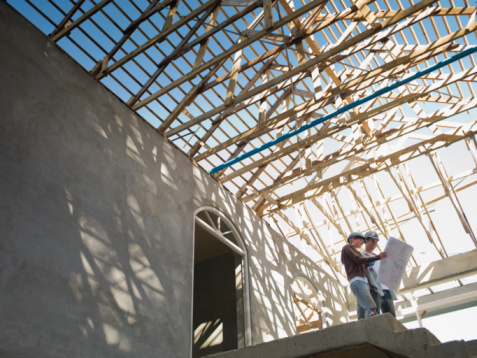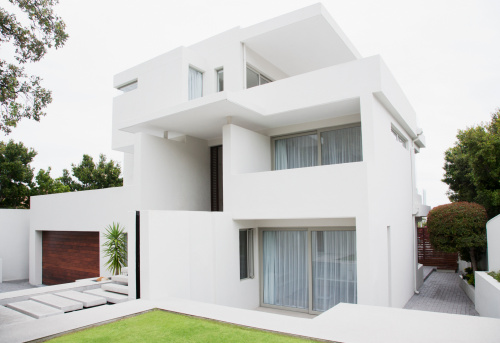

In this Edition
Construction
Management Specialists
111 Pine Street, Suite 1315
San Francisco, CA 94111
(415) 981-9430 (San Francisco office)
1415 S.Barton St.
Arlington, VA 22204
(703) 609-7494 (Washington, DC office)
4361 35th Street
San Diego, CA 92104
(619) 550-1187 (San Diego office)
8538 173rd Avenue NE
Redmond, WA 98052
(206) 571-0128 (Seattle office)
www.TBDconsultants.com
January 1, 2011 marked the introduction of the mandatory CALGreen standard, otherwise known as the 2010 edition of the California Code of Regulations, Title 24, Part 11. It probably should not be surprising that California became the first to introduce a state-wide mandatory green-building code. Although introducing new requirements, and emphasizing the ecological-aspects of the standard, this is more an evolutionary progression from the previous regulations, rather than a revolutionary new concept.

CALGreen is markedly different from LEED, although it promotes the same green-building goals. While LEED is a standard that developers and building owners can adopt if they want to, CALGreen is a requirement of the state and contains enhancements that cities and other local jurisdictions can adopt and make obligatory.
The requirements of CALGreen are generally less than those implemented in most new buildings that aim for a LEED rating, and this was deliberately planned in order to keep the cost impact to a minimum, while promoting good practice by using green-building methods that are familiar to the industry. Probably the largest cost will be to the cities and counties for training their building inspectors in the new standard! Although the requirements of CALGreen are less than LEED, their overall impact on the environment could be substantially more, because the regulations become a requirement for all new buildings (or at least the vast majority). The implementation of CALGreen will reduce greenhouse gas emissions by 3 million metric tons by 2020, according to the California Air Resources Board.
Gaining a LEED rating has always been seen as making a building stand out from its competition, and the requirements of the CALGreen Code will not change that. Since CALGreen sets the minimum green-building standard that all new buildings must meet, being CALGreen certified will simply mean that the building is in compliance with the current codes.
The CALGreen Code is subdivided into standards for residential (up to 3 story) and non-residential buildings, and the standards themselves are divided into mandatory and non-mandatory ones. The non-mandatory standards are themselves sub-divided into two levels, known as Tier 1 and Tier 2. These Tier 1 and Tier 2 standards are not there so that owners can decide to go for a higher rating (like going for LEED Gold), but are there so that local jurisdictions can adopt higher standards than the minimum ones required throughout the state. Some of the requirements apply to specific building types, such as schools, and there is a Matrix Adoption Table that clarifies what applies where.

The mandatory requirements for non-residential buildings include:
- parking spaces for clean air vehicles (about 8% of total parking spaces)
- permanently anchored bicycle racks (5% of the number of visitor motorized-vehicle parking spaces, with a minimum of one 2-bike rack)
- 20% reduction of potable water use (excludes process water)
- separate indoor and outdoor water meters for buildings over 50,000 SF
- moisture-sensing irrigation systems for larger landscape projects
- divert 50% of construction waste from landfill (this requirement is relaxed if the local jurisdiction does not have a recycling center)
- use of materials that limit emission of volatile organic compounds (VOCs)
- commissioning for new, nonresidential buildings over 10,000 SF
- no direct-beam illumination from the building site
- requires O&M and educational material to ensure building and its systems are used correctly
The voluntary (Tier 1 and Tier 2) standards tend to build on the mandatory ones (e.g. setting standards for water use reduction up to 40%, and requiring the recycling of up to 80% of construction waste). It is anticipated that these voluntary standards will become mandatory as the years progress (just as many of the standards from the all-voluntary first edition of CALGreen in 2008 have now become mandatory).
Inflation & Bid Prices
Geoff Canham, Editor
The recovery continues at its snail pace, continuing to trend upwards despite fairly regular hiccups from home, and more frequently from abroad. Certainly our hearts go out to the Japanese. But in this article we look at another issue looming ahead of us that is likely to keep the recovery slowed down - inflation.
CSI updated its trade-format system (known as MasterFormat) in 2004, and now they have issued a new version of their building element-format system, Uniformat. Here we take a first look at CSI's new Uniformat 2010.
Design consultant: Katie Levine of Vallance, Inc.